MISANU Computing Centre
Dr Vanja Korać
The MISANU Computing Centre is the main organisational unit in charge of maintaining, planning, and developing the local network, software, and services at the Mathematical Institute of SANU.
In addition, the Computing Centre provides support for a large number of different services to both MISANU users and external partners and associates. The steady and reliable performance of the Computing Centre is enabled by Dr Vanja Korać, as Head of the Computing Centre (holding the position since 2000), Dragan Aćimović, as technical support of the Computing Centre (holding the position since 2014), Božo Vuković as administrator of the e-education platform (since 2018), Zoran Davidovac as an external associate in maintaining the security of computer systems (since 2009) and Aleksandra Arsić as web administrator (since 2016).
The basic functions of the Computing Centre MISANU are:
- Maintenance of the Institute's internal network (LAN); maintenance of hardware and software.
- Planning the development of the Institute network: adding new workstations and virtual machines, address space maintenance.
- Maintenance of the main Internet server, virtual servers and backup servers.
- Maintenance of the ERC facilities and equipment that belong to the Computing Centre.
- Work with users and external associates: users’ accounts, technical support.
- Providing support to services: secretariat, accounting; providing support in organising e-seminars, e-scientific councils, and distribution of video conferences and production of educational e-content.
- Providing support in using the smart board in the lecture hall.
- Providing support in organising and conducting seminars and lectures organised by MISANU.
- Participation in projects that improve the existing infrastructure.
- Planning and implementation of new services.
- Participation in projects of digitisation, archiving and processing of collected digital material.
- Acquisition and storage of software.
Chronology of the development of the Computing Centre
As the Mathematical Institute very early recognised the importance of computer science in the further development of mathematics, it set up the Computing Centre in 1968. It was equipped with one of the most modern computers of that time – IBM-360/44. Since the Institute did not have an adequate room to accommodate such a computer, the Computing Centre initially operated at the Faculty of Mathematics. As technology evolved and computers became faster and more compact, the Mathematical Institute again became the seat of the Computing Centre in the mid-1980s.
After purchasing the first IBM (XT-AT) PCs, between 1985 and 1987, at the initiative of MISANU director Zoran Marković, the Computing Centre entered a new phase of its development. In that way, it was possible for the Institute to equip the premises with the most modern PC computers of that time. The Mathematical Institute had its premises on the first and fourth floors of the SANU building, and the Computing Centre was housed on the second floor in office number 213 at the address 35, Knez Mihailova Street.
In 1989, at the suggestion of Professor Žarko Mijailović, the first computers for parallel calculations – transputers – were procured. In the following year, the first laser Post-Script Printer NEC Silent Writer LC-800 was purchased, which was extremely rare acquisition of that time and one of the first in the former Yugoslavia. In order to create a network with an information system, the Institute also hosts the first HP proliant server in Serbia with a hard drive of, for that time, an impressive 700 MB. For the purposes of monitoring the implementation of scientific projects, Professor Mijajlović, in the period from 1989 to 1997, developed the Information System of the Mathematical Institute (ISMI), while Zoran Marković, then Director of MISANU, conceived the functionality of the system. In the early phase of development, Milan Dražić was also involved as a programmer, and after 1997, the system was maintained by Dragan Urošević. Through the phases from 1991 onwards, the ISMI was network software, which enabled multiple users to share their work to the same databases. Adapted versions of the ISMI satisfied the needs of the Serbian editorial office of Zentarblatt, as well as the Ministry of Science, i.e. the Science Fund, which kept the databases that contained all scientists in Serbia.
In 1991, the LaserJet III laser printer was purchased with, for that time, incredible 600 dots per inch and PCL5 printer language. In the same year, 386 and 386sx desktop computers were purchased, as well as network cards. In the period 1991-1994, Zolt Zolnai and his colleagues established the first network at the Mathematical Institute (1991) and set up the Novell Netware 3.10 (1992) server, which was used to store user data. From 1993 to 1997, Aleksandar Mirić was hired to maintain the computer systems at MISANU.
In 1994, Vlada Petrović and Uroš Majstorović set up the first Linux server at the Institute and established modem communication that enabled the e-mail service. The purchase of the first Olivetti laptops followed at the beginning of 1993, but due to the delay in Hungary because of the sanctions against FR Yugoslavia, they were delivered in mid-1994.
In the first half of 1995, MISANU received the domain
mi.sanu.ac.yu, and in the same year, Veljko Spasić launched the first MISANU website. In 1996, with the advisory assistance of Zoran Perišić, an Infocus LitePro 620 DLP Projector with JBL speakers of 600 ANSI Lumens and a resolution of 800 x 600 was purchased for scientific lectures, which was perhaps the only one of its kind in the country. In the period 1997-1999, maintenance of the computer network and system is taken over by Igor Jovanović, and from 1999-2002, Saša Todorovic was engaged in the maintenance of the system.
In 2000, Vanja Korać updated the existing operating systems (Win95/Win98) on all PC computer systems with the new Windows XP OS. With his colleague Milan Vukosavljević, he participated in the replacement of obsolete Linux OS on server stations with the latest versions of OS Linux Slackware 8. As a result of the cooperation with the Leibniz Institute for Information Infrastructure, an EMIS server was set up to serve as a mirror site and access to the Zentralblatt MATH database. In order to protect the server from electric shock and power outages, the Institute procured an APC Tower Smart-UPS 2000VA intended for the most important servers and several smaller stand-alone MGE and APC UPSs that protect other important computers.
In 2002, the MISANA website got a new look thanks to Arthur Stokes. The following year, the project of the local computer network MISANU was made, which envisages the installation of active and passive equipment for all SANU institutes.
In 2006, a computer network project was implemented within MISANU. CISCO active equipment was installed, and in the same year, the IBM cluster HS21 was procured within the framework of the project of scientific incentive organised by the Ministry of Science. MISANU was among the first in this area to own this type of Cluster. It was used for Parallel Computing and consisted of 16 Ibm nodes (IBM HS21)+1 Ibmx3650 node management.
Until the end of 2007, the Computing Centre was located in the SANU building at 35 Knez Mihailova Street, on the second floor (room 213). At the end of 2007, before moving to a new building, a new project of the local computer network MISANU was made in the building at 36 Knez Mihailova Street, which included rooms on the third and fifth floors. The central hub of the MISANU Computing Centre was moved to the third floor of the new building. The complete active equipment was transferred, which is arranged in the corresponding rack cabinets on the third and fifth floors. By relocating, the Institute also provided one computer room (304) for the uninterrupted performance of scientific research work of young scientists and researchers.
With the implementation of the developed networking project, MISANU received a modern network supported up to 1 GBps connected optically via a Cisco L3 switch with the SANU building and the Rectorate building. The hall of the Computing Centre was equipped with three Mitsubishi inverter air conditioners, size 24, with advanced technology that regulates the speed of the compressor, and thus electricity consumption. These air conditioners provided a constant temperature of 22 degrees, during 24 hours a day for 365 days a year.
In the same year (2008), the DNS server was prepared for the successful transfer of the domain
mi.sanu.ac.yu to mi.sanu.ac.rs. The server computers were also replaced with new equipment, provided by means of TEMPUS project funds. At the beginning of 2009, a new Red Hat EL 5 Operating System was installed on the main Institute server and a complete migration of all data was performed. During the relocation, the old telephone exchange was replaced by a new Panasonic exchange, which has 11 lines with one Gateway, which enables each office to have its own extension (23 offices). The control panel is installed in the hall of the Computing Centre and connected to the active equipment cabinet.
In 2009, the Mathematical Institute became a member of the Academic and Educational Network Initiative of Serbia – AEGIS. In cooperation with the Institute of Physics, an important step in the development of a distributed research infrastructure for e-Science in Serbia was made in April 2010, when the Linux cluster of the Mathematical Institute was integrated into the existing national AEGIS infrastructure. Bojan Marinković, Vanja Korać and Tatjana Jakšić Krüger, with the support of SCL's Grid operative team, reconfigured the IBM HS21 cluster as a new AEGIS11-MISAN Grid location in RC MISANU. This website consisted of 16 nodes with a total of 64 top Intel CPUs, which was available to the
Serbian scientific community through the AEGIS virtual organisation.
In 2012, due to the increased number of servers, the physical server infrastructure MISANU was modernised and the process of its virtualisation commenced by procuring a new server and storage of higher capacity. The first virtual platform in the institute was built – Vmware ESX and the integration of storage systems and data domain backup solutions were implemented. By 2013, the number of servers in MISANU had grown to 25, of which as many as 20 were virtualised on the new IBM x3650m2 server, with 48 GB of RAM and 8 processors integrated with a 30 TB EMC VNX storage system, thus reducing the number of physical servers, as well as electricity consumption, and increasing data security.
In 2013, the Maxeler MPC-C500 data-flow computer was purchased, and in 2015, the installation was expanded with the Maxeler MaxWorkstation DFE, which is based on the same architecture. These servers were also used within the practical lectures in the subjects held by Professor Veljko Milutinović for students of the University of Belgrade, but also of some universities in the USA.
On the 70th anniversary of the Mathematical Institute, in 2016, the MISANU website was modernised. In the same year, Milica Knežević, together with Zoran Ognjanović and Edin Mulalić, developed a
software system for monitoring bibliometric processing of scientific journals in Serbia.
At the beginning of 2018, equipment was procured on which a platform for e-education and distribution of video conferencing and production of educational e-content "MiTeam" was installed, so that at the beginning of following year, WIFI CISCO communication equipment would be installed in the entire institute. All offices are covered by WIFI signal. Due to the increased number of servers, the old Silcon UPS device was replaced with three new devices for uninterruptible power supply (APC MGE Galaxy 3500, 40kW/32kVA 400V).
In 2020, Nikolina Vukša (Faculty of Mathematics, Belgrade) in cooperation with Zoran Ognjanović and Milica Knežević developed a
repository of scientific results of MISANU associates using the DSpace-CRIS programming environment.
Finally, in 2021, the storage of the system was replaced with a new one of higher capacity, a new physical server was procured, and all virtual machines were migrated and consolidated to one virtual platform. The old Networker backup system has been replaced with the new Avamar solution, and all virtual machines are backed up according to the stipulated plan. The total number of physical and virtual servers is currently 55. All activities undertaken have contributed to improving the overall performance of the network and increasing the capacity to store digital assets.
The multi-technological nature of the MISANU Computing Centre and its cutting-edge equipment, rarely found in the other institutes in the country have been created and cherished by the people who oversaw its development. The technology used surpasses the one that exists in much more developed countries in the region. We can proudly say that the path of the successful development of the Computing Centre is uninterrupted, which makes it very adaptable in the technological challenges that follow.
Citius, altius fortius!
Gallery
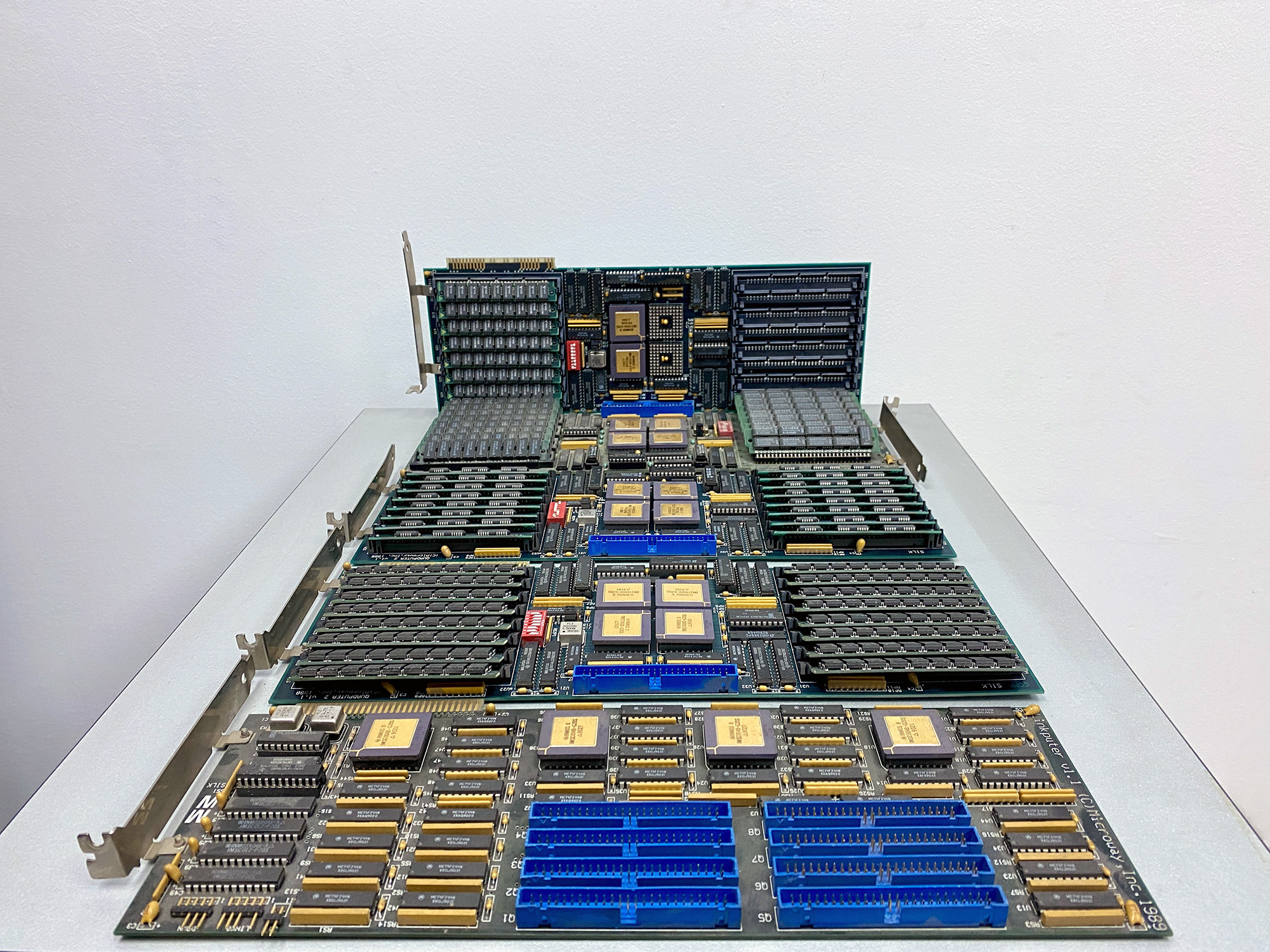
Transputers in the year of 1989
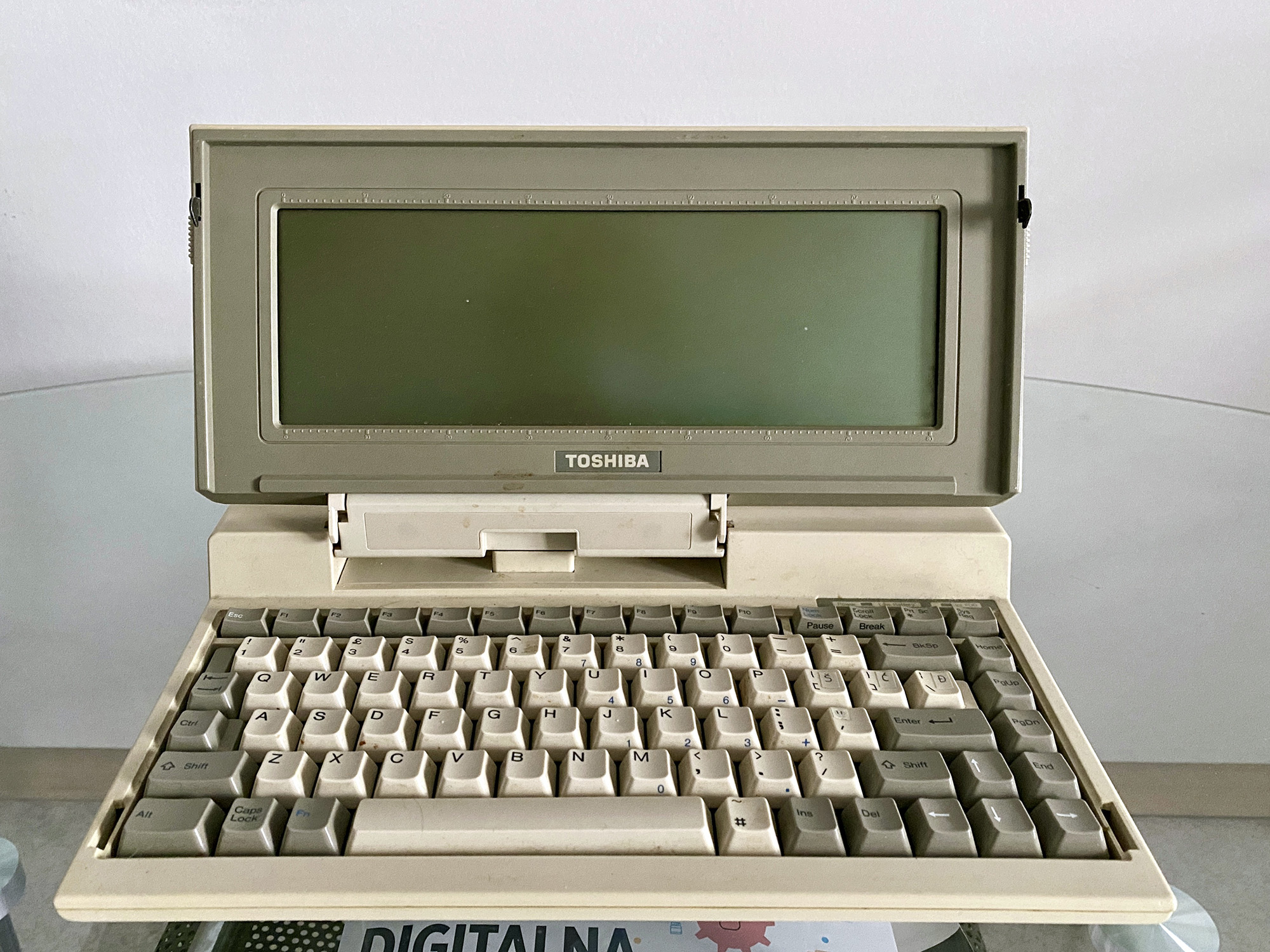
Portable personal computer Toshiba T1000 in 1988
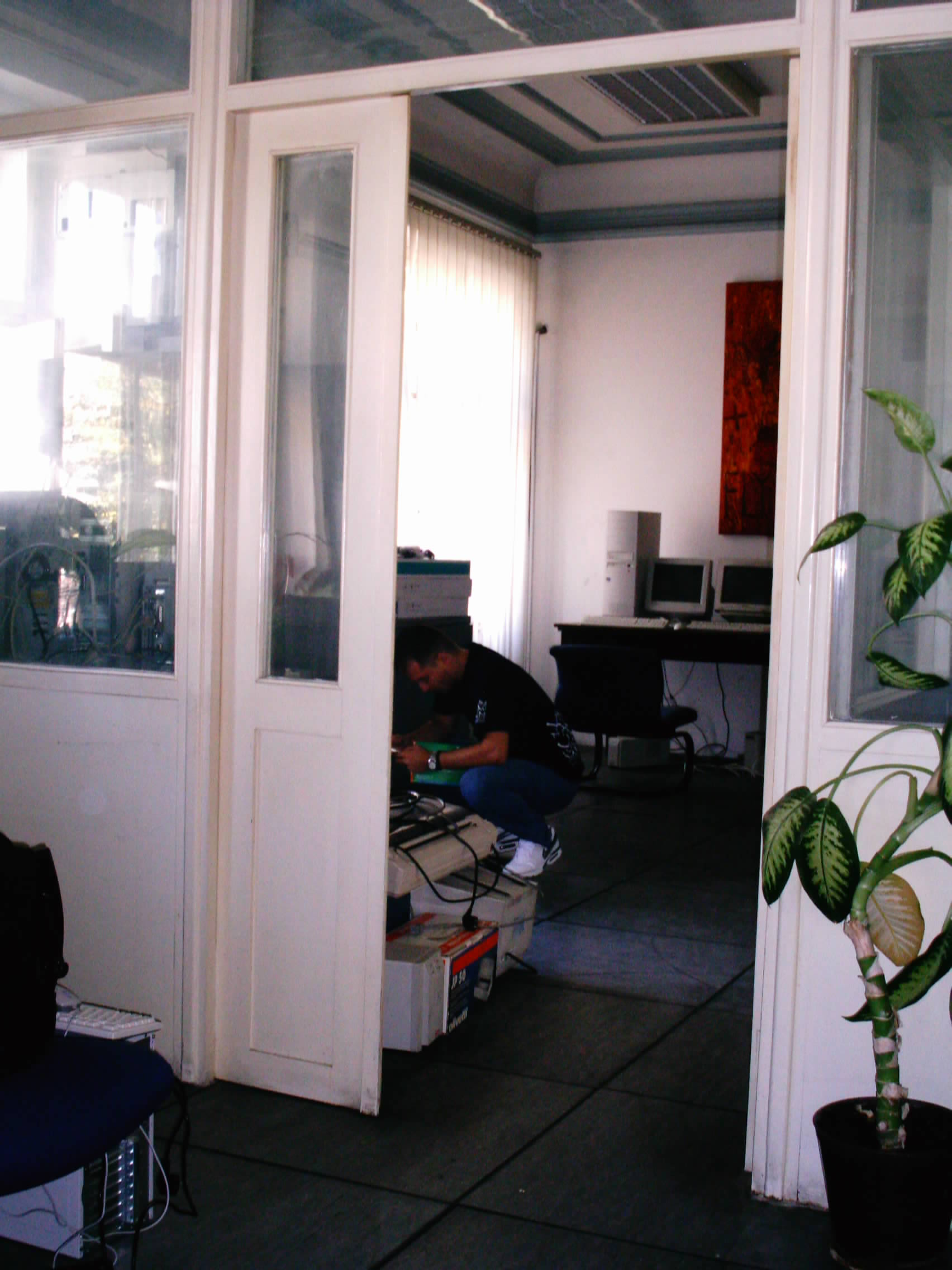
MISANU Computing Centre in 2002 (Courtesy of Vanja Korać)
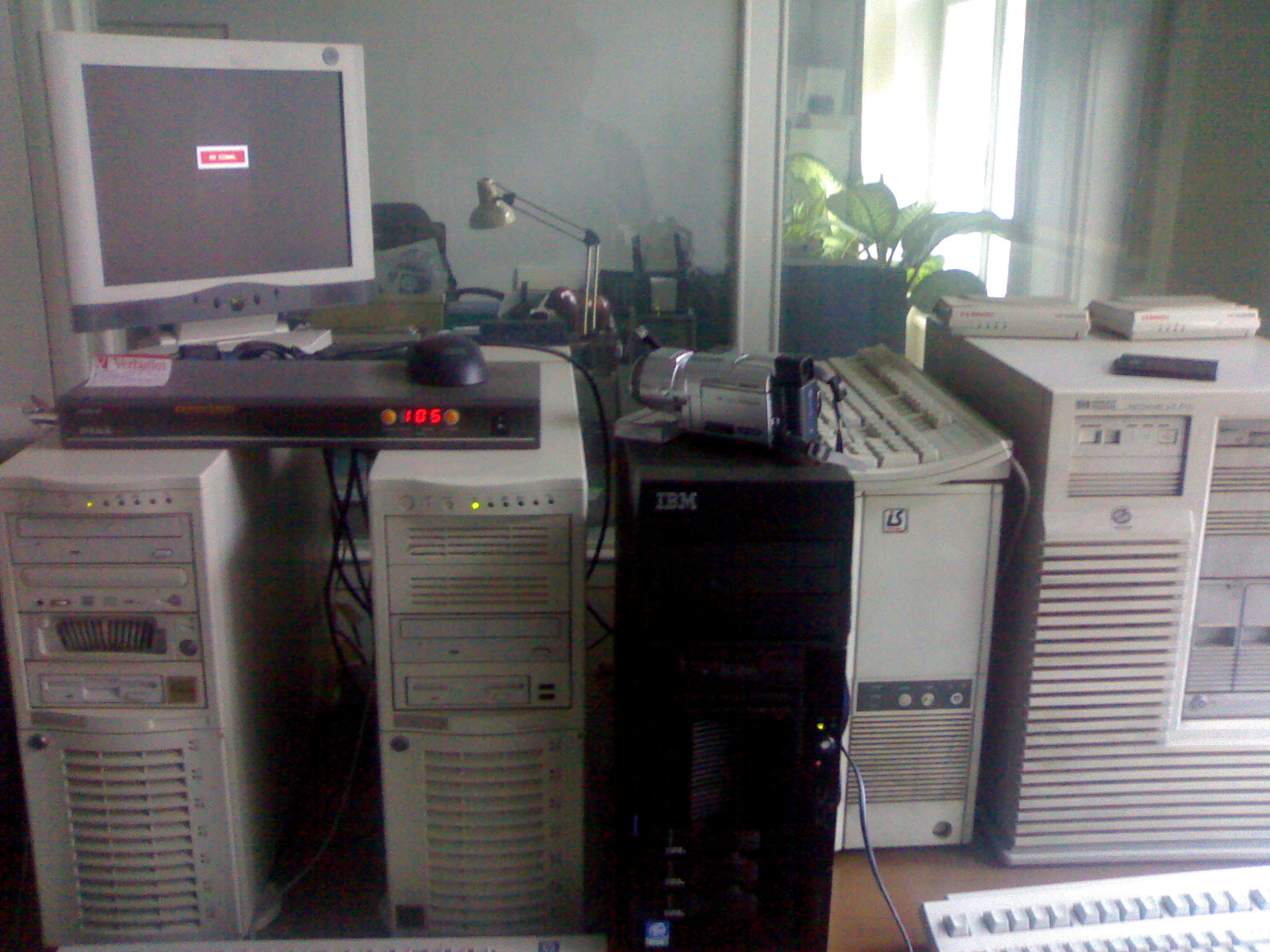
MISANU Computing Centre in 2006 (Courtesy of Vanja Korać)
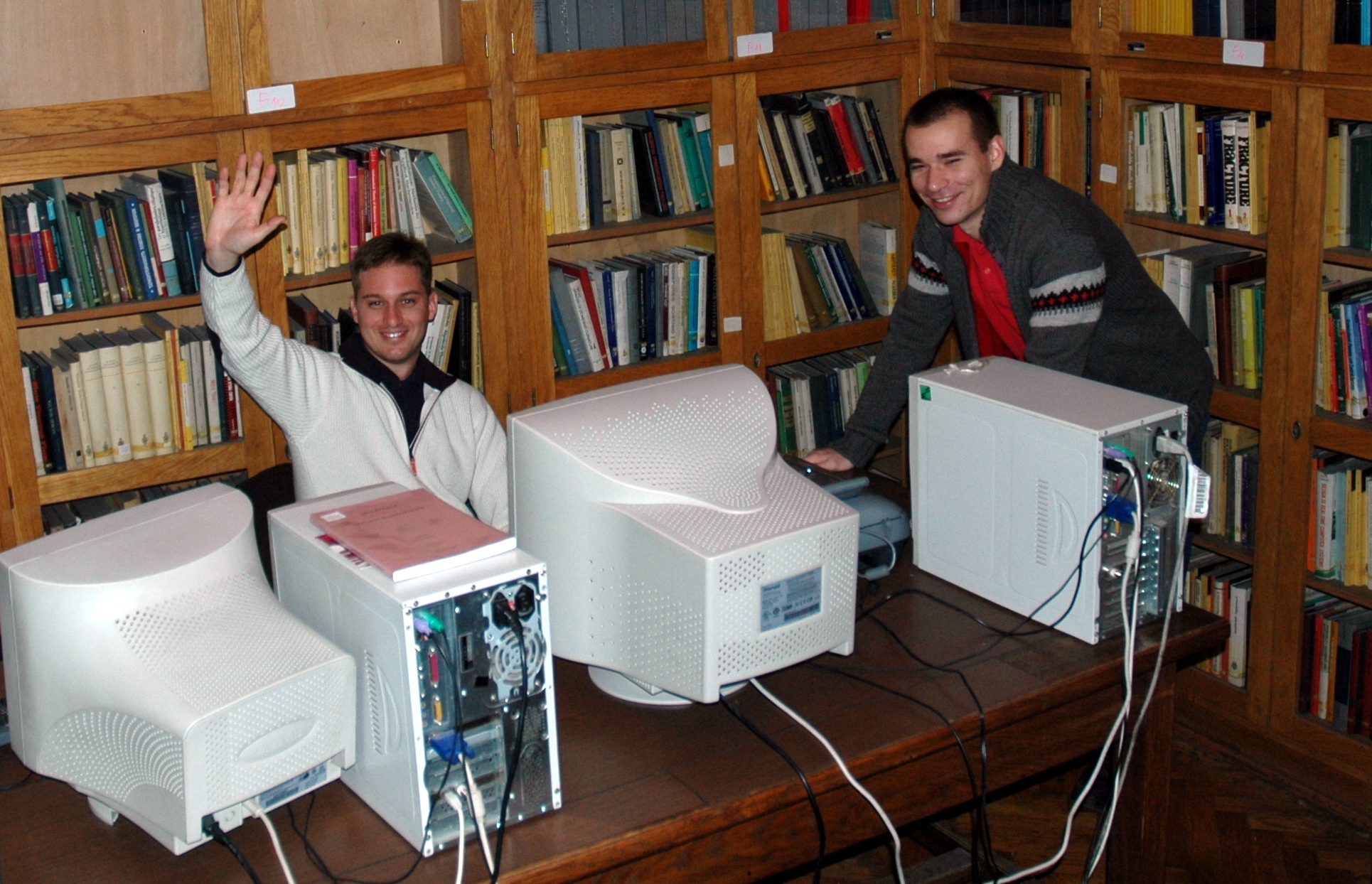
Library premises on the first floor (35 Knez Mihailova Str.) with the computing room (Courtesy of Vanja Korać)
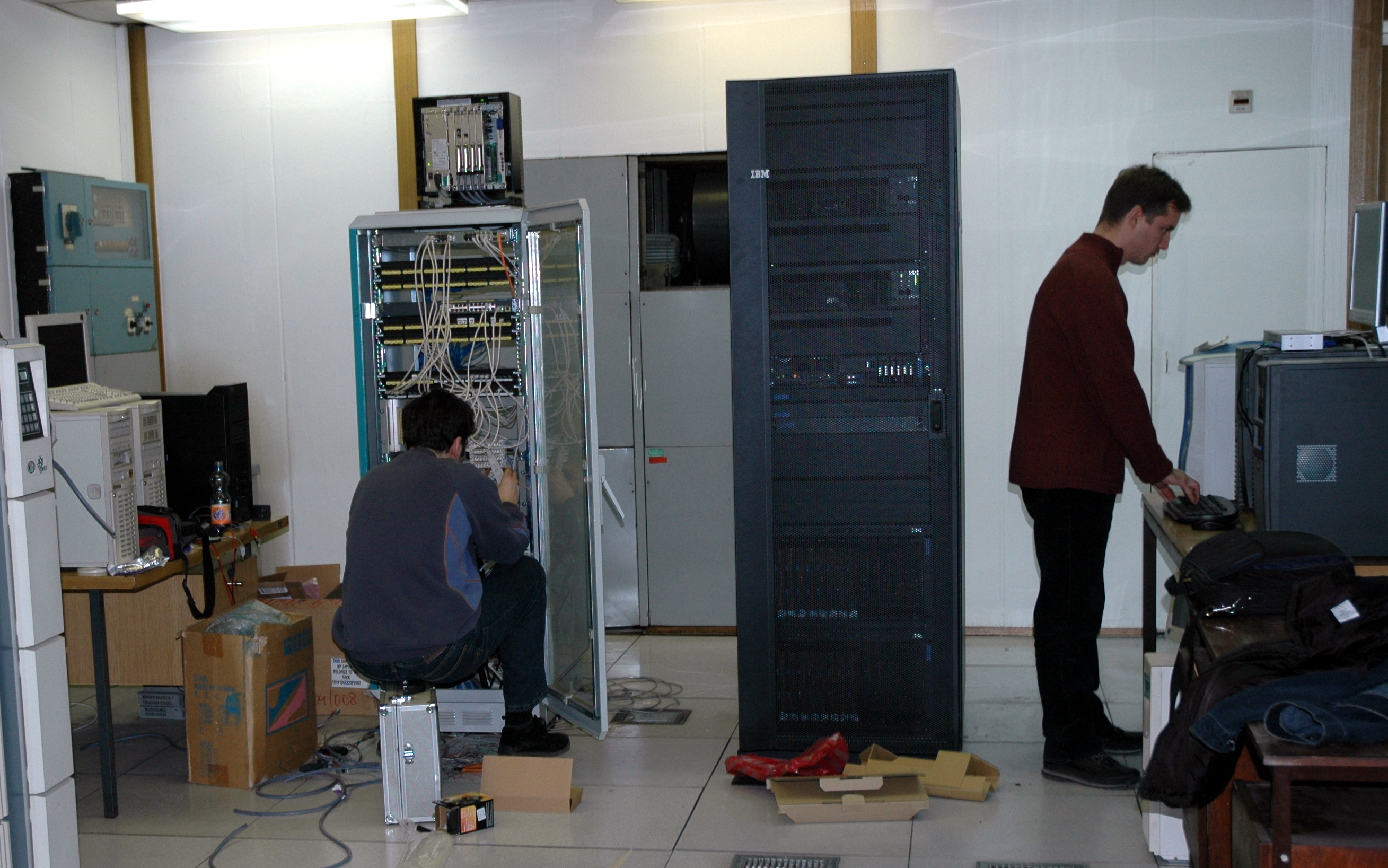
Preparations for moving to the new Computing Centre (December 2007) (Courtesy of Vanja Korać)
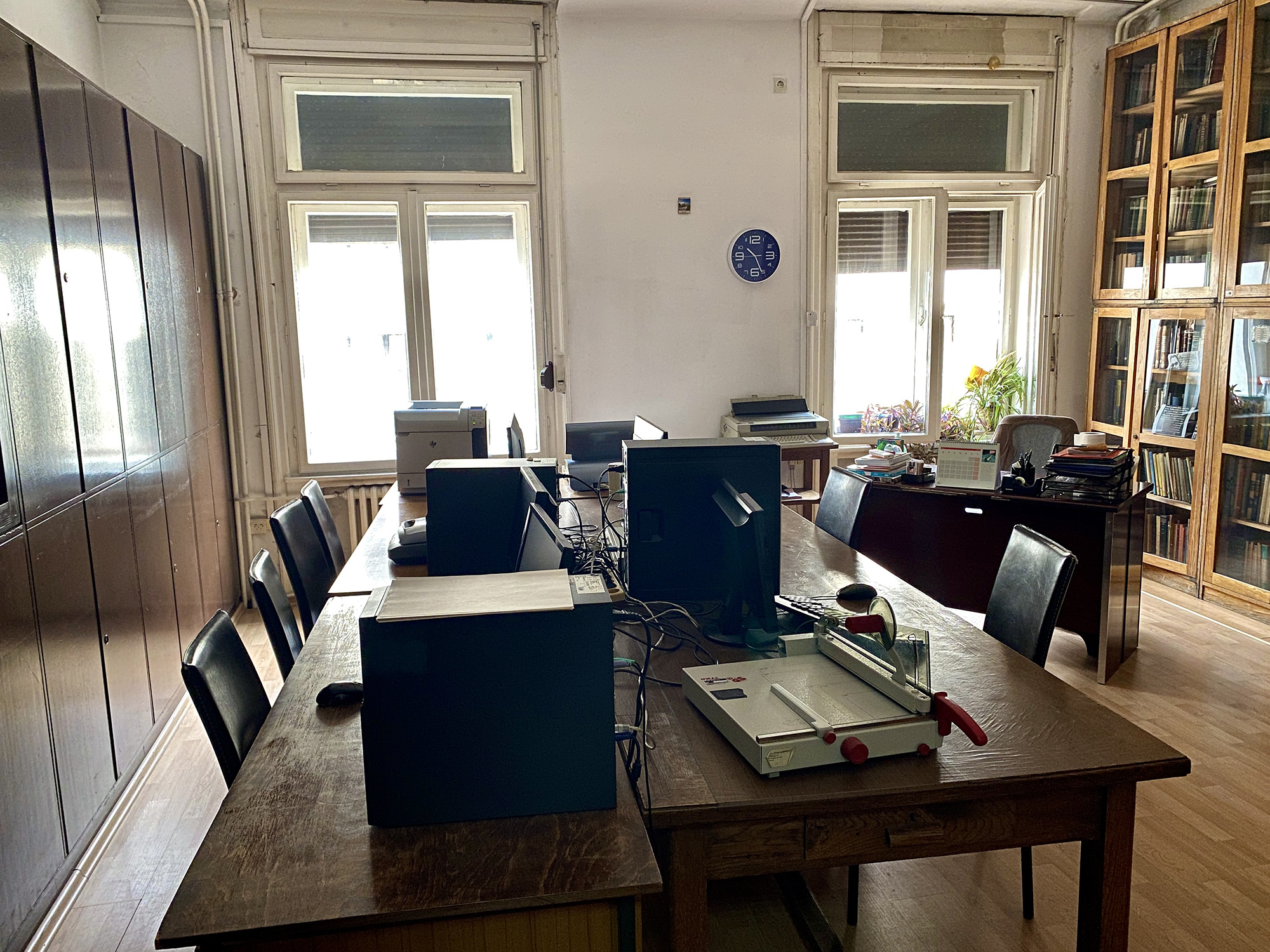
Computing room 304 (Courtesy of Vanja Korać)
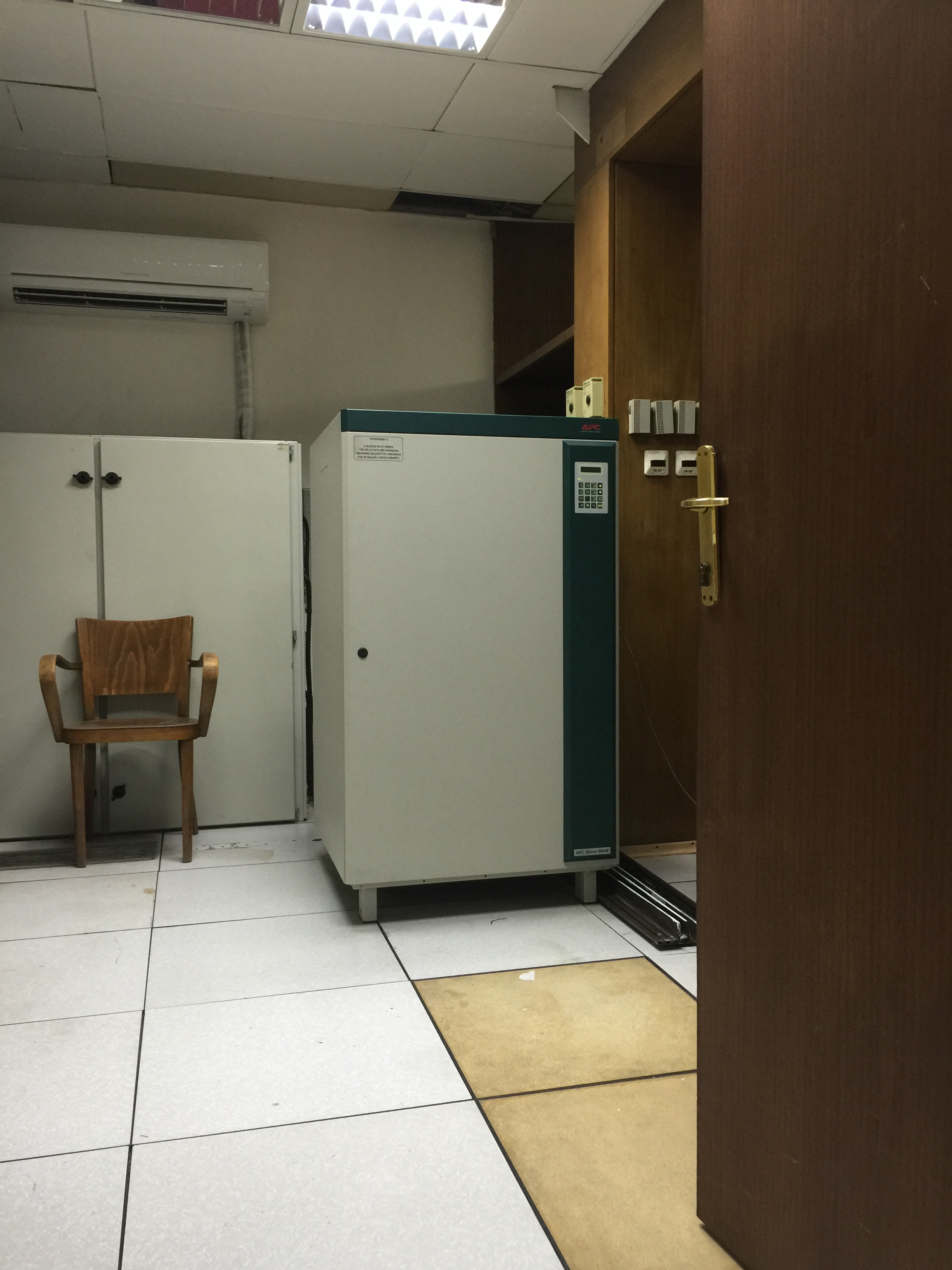
Computing Centre UPS room 310d 2008 (left) and 11 years later in 2019 (right) (Courtesy of Vanja Korać)
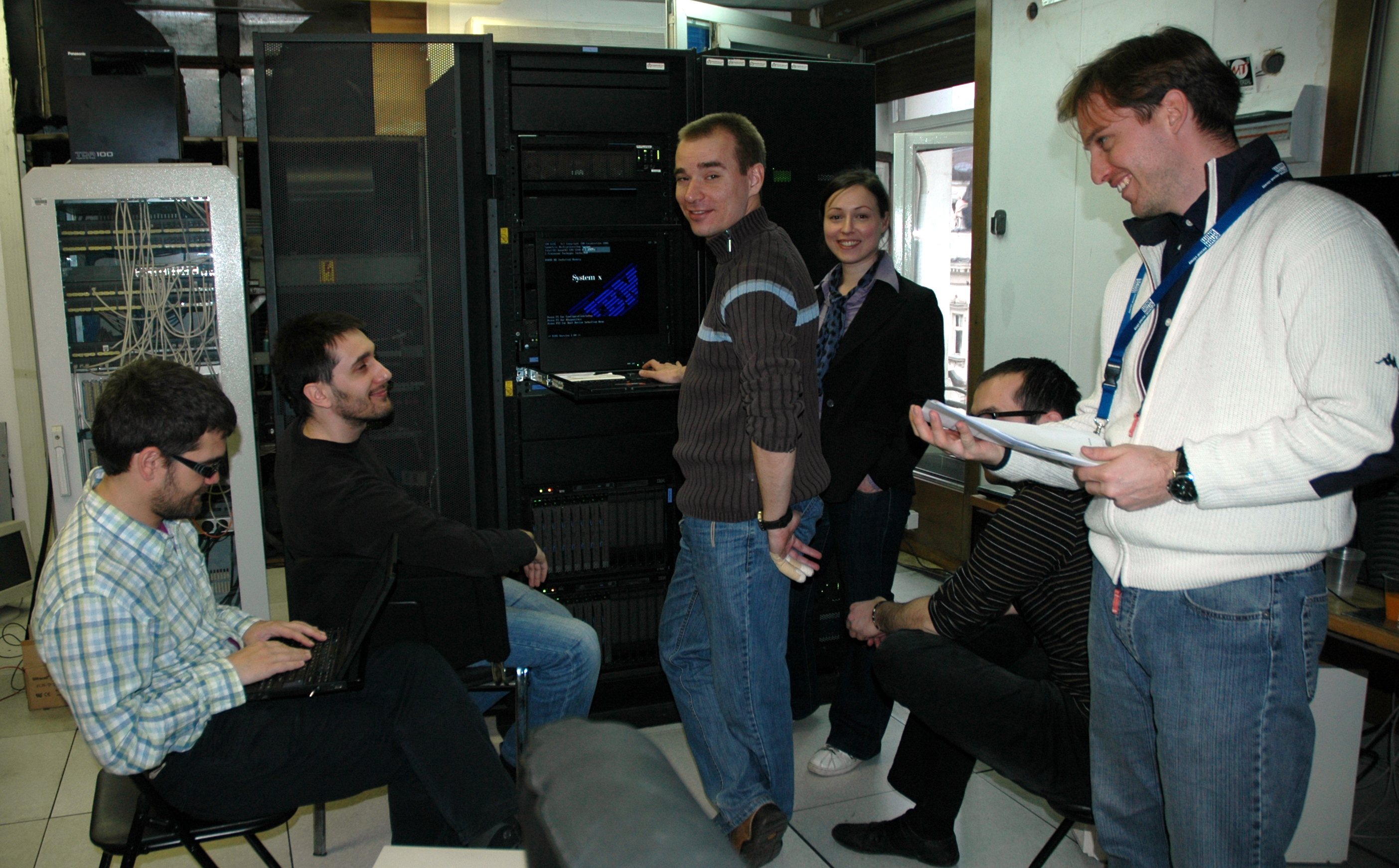
Configuration of AEGIS11-MISANU (April 2010) (Courtesy of Vanja Korać)
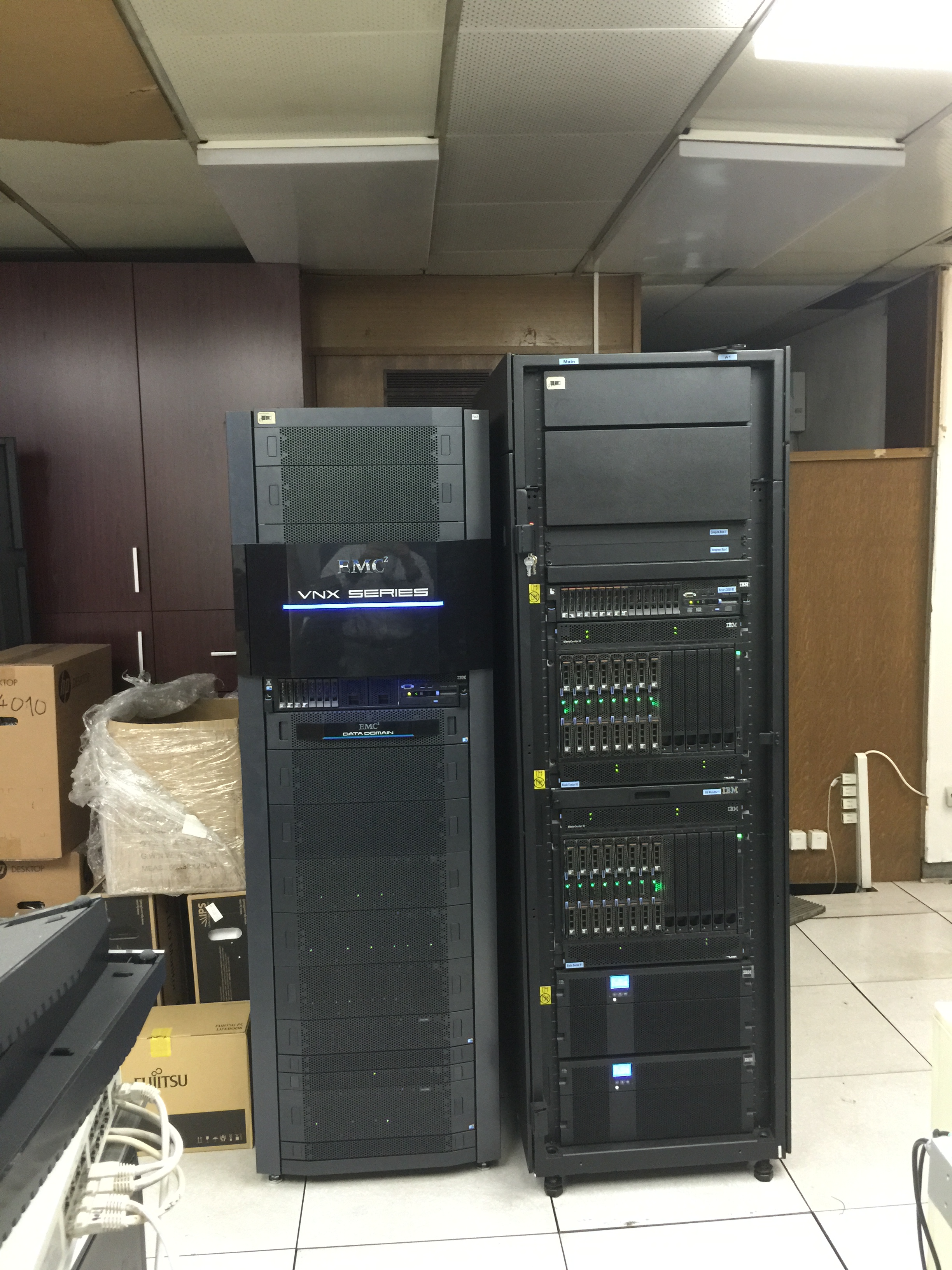
EMC VNX storage and IBM cluster HS22 in the Computing Centre (2012) (Courtesy of Vanja Korać)
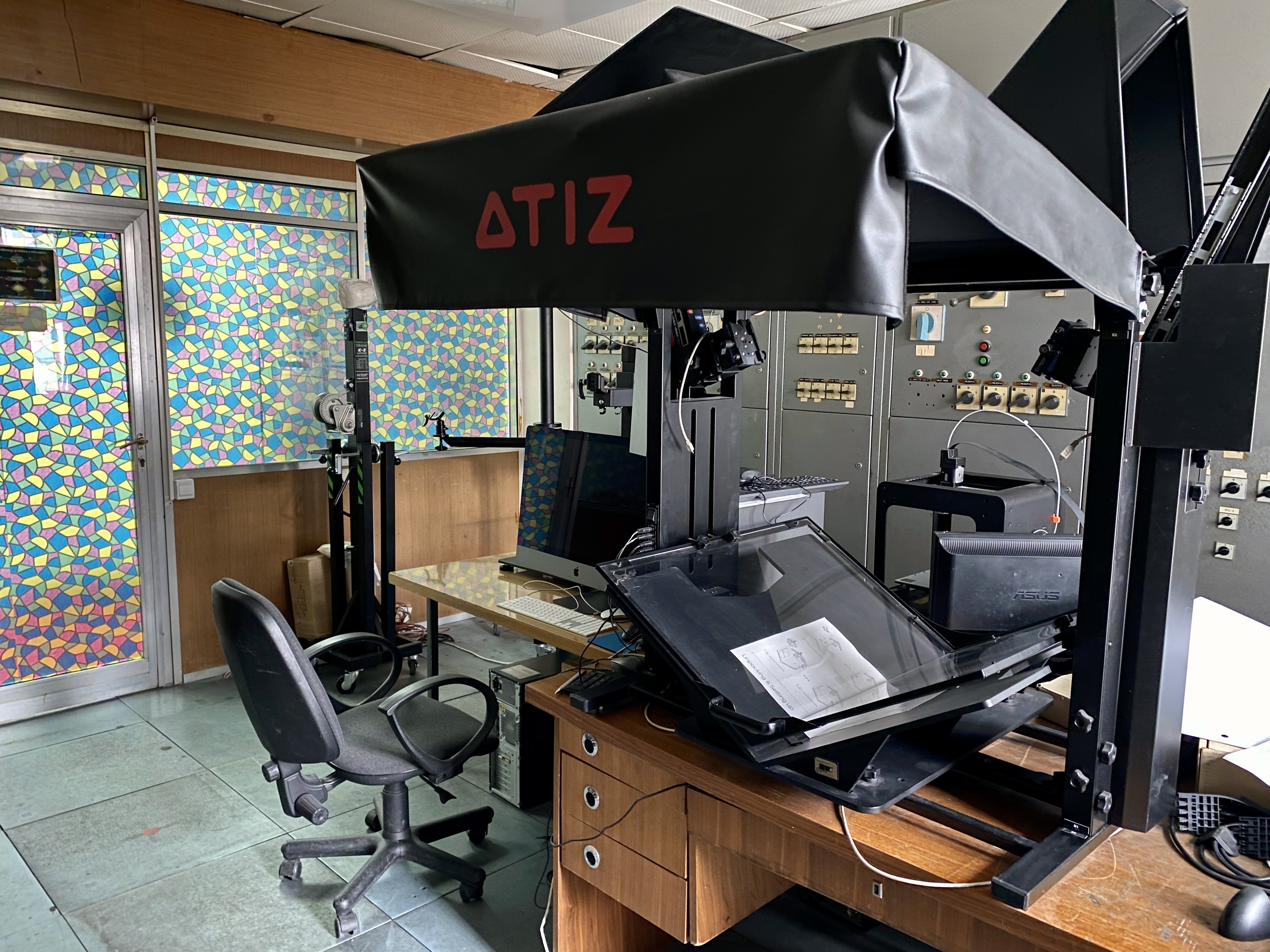
ATIZ Book Scanner PRO in room 310b (Courtesy of Vanja Korać)
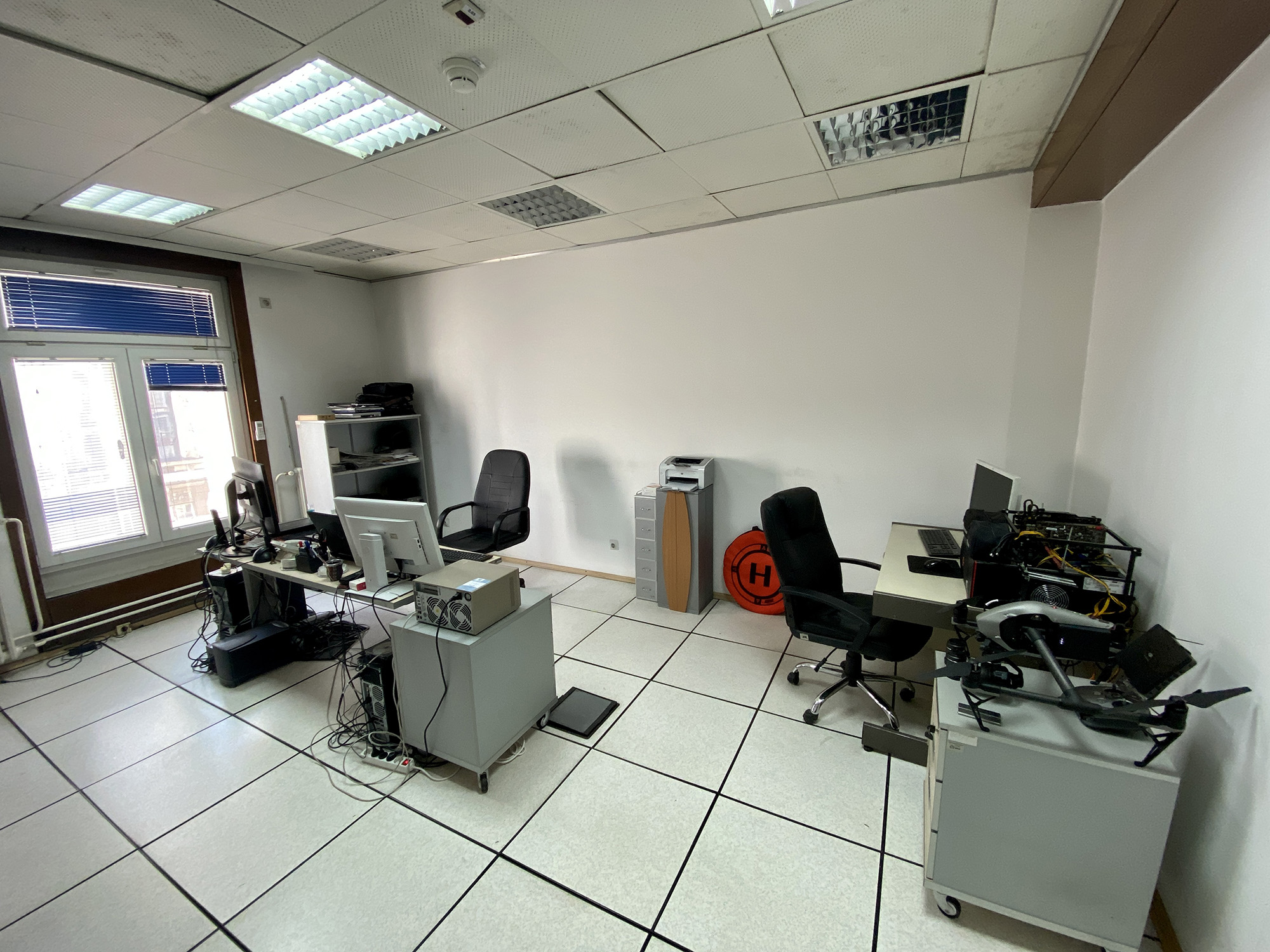
Computing Centre control room (Courtesy of Vanja Korać)
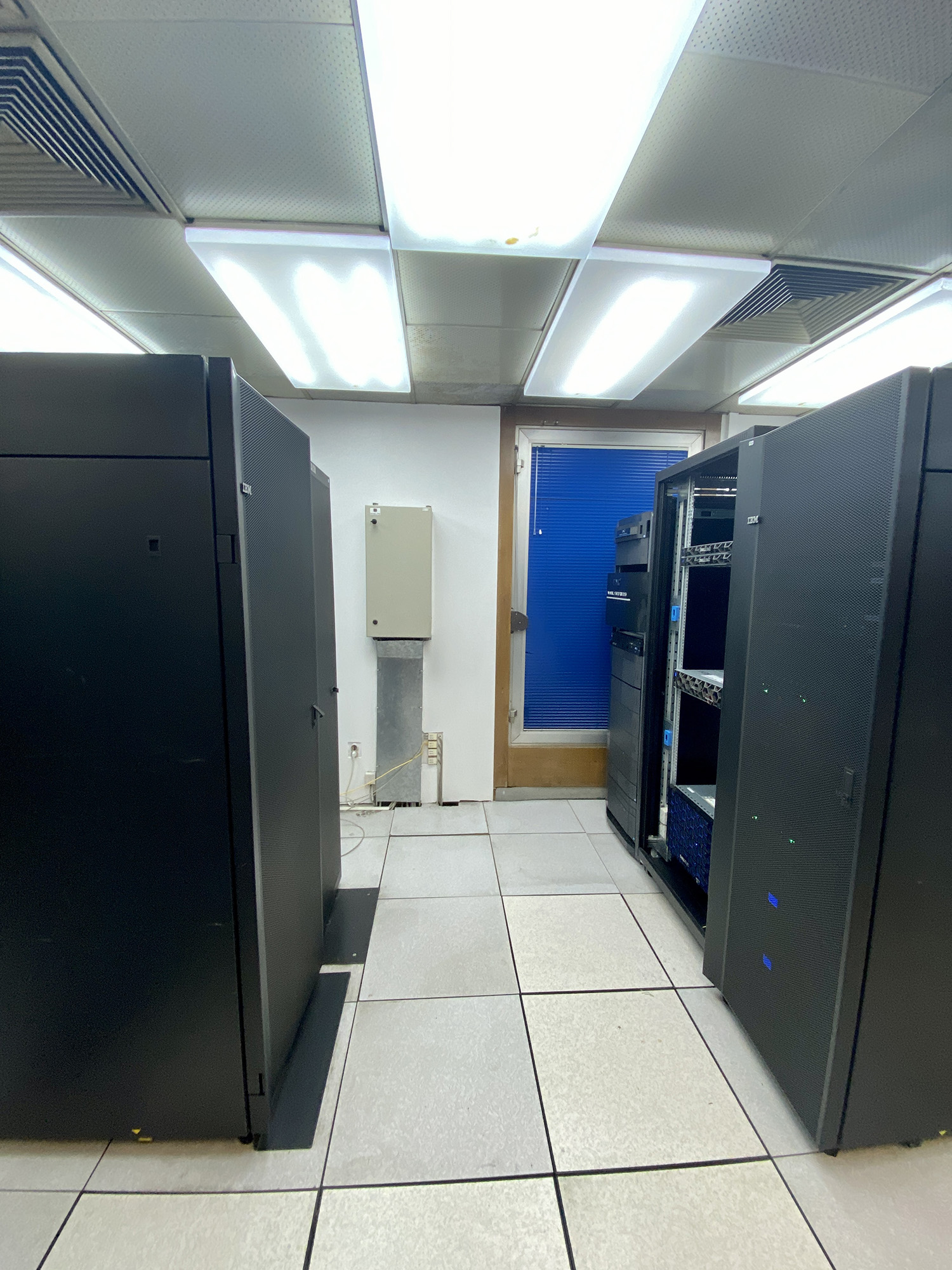
MISANU Computing Centre in 2021 (Courtesy of Vanja Korać)
